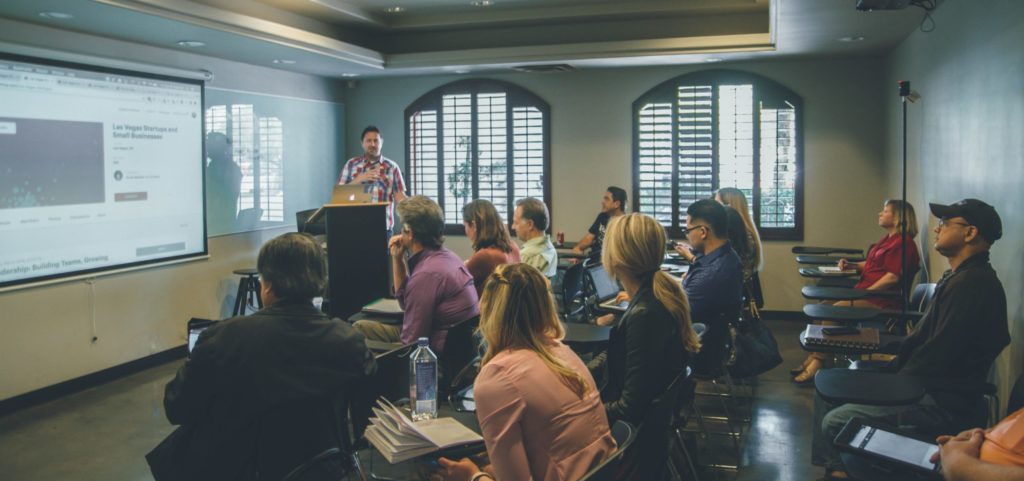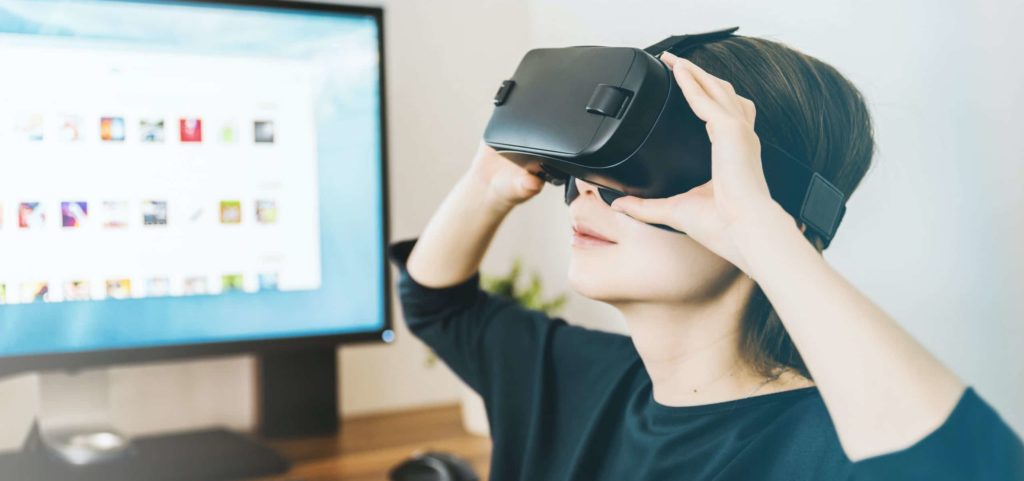Growing Trends in Higher Education and How Experiential Learning Can Help
Higher education is undergoing major changes. With the post pandemic, the growth of AI and machine learning, and an ever-changing social and political climate, students have different expectations and needs than just three years ago.
As educators, it’s important to be aware of these trends to provide the best opportunities and achieve optimal outcomes for our students. It’s also essential to know why these trends occur and how to tap into them.
Thankfully, this article is here to help you! Below, we’ll discuss some growing trends in higher education, what they mean for students and educators in colleges and universities, and how you can use a modern technique known as experiential learning to stay ahead of the game.
How is higher education and learning changing?
With technological advancements, societal changes, and the growing number of student enrolments, the higher education sector—and the way we teach—is changing significantly.
What we once saw as a privilege is now necessary for success in today’s economy. As such, higher education institutions such as colleges and universities are responsible for teaching more than industry-specific knowledge—they must also focus on equipping students with 21st-century skills like critical thinking, learning agility, and information literacy.
Following the COVID-19 pandemic, we’ve also seen a major shift towards online and blended education. These options offer more flexibility for students but require specific steps to ensure students remain engaged with class content, transforming higher education overall.
What are current issues in higher education?
As we’ve collectively moved towards an online or blended learning environment, many institutions – including universities and educators – have identified several issues and barriers impacting student outcomes.
According to a 2018 study published in Computers in Human Behaviour, modern universities turn towards a student-centric approach. This approach focuses on understanding student learning experiences more deeply, which stems from a lack of personalisation in traditional university and college education settings.
A 2019 study by the University of Wollongong also found that students face social, cultural, and economic factors influencing their ability to succeed in education.
These issues and barriers point to a common solution—higher education needs to focus on students as individuals, tailoring learning experiences to their personal, social, emotional, and cultural needs. According to a 2020 study, educators should also focus on relevant material and active student participation to achieve optimal outcomes in the current higher education landscape.
What are the growing trends in higher education?
Now, let’s dive into some rapidly growing higher education trends and discuss why you might choose to implement them in your classroom.
-
Flexible and online learning
Flexible and online learning is an educational model that enables students to learn without being tied to a specific time or place. This model saw exceptional growth over the COVID-19 pandemic and continues to rise in popularity.
You can deliver this type of education in many ways, including asynchronous and synchronous methods. The asynchronous approach is the most common, where students have no set schedule for completing their work. They can study at their own pace while managing outside commitments. This is not limited to just online courses or online degrees.
Synchronous learning requires students to log on and participate in an online teaching class at a set time. This approach is great for enabling students to collaborate in real-time, but it is less flexible.
Flexible and online learning is beneficial because it is accessible for all learners, including international students, and can reduce university and college costs for low income students or those who can’t afford traditional schooling and lower their student debt.
-
Active learning
Active learning is a teaching technique focusing on a student’s active participation in the lesson. It involves providing students with opportunities to independently answer questions and solve problems, rather than passively listening to a teacher.
Active learning is effective in improving student outcomes across many subjects. Among other benefits, it helps students retain information, achieve better results, and stay engaged with classroom content, aiding student success overall.
-
Formative assessments
A formative assessment intends to evaluate a student’s understanding of a given topic and provide feedback. Quizzes, tests, and homework questions are common approaches you can use.
Formative assessment aims to identify what students know, what they don’t know, and what they might need extra support with. Teachers can use this information to readjust their curriculum plan or educational approach to suit each student’s needs and benefit student success.
-
AI for learning
AI has developed in leaps and bounds over the past few years—so much so that it’s now a fantastic way to enhance learning outcomes in higher education.
Some common ways to apply AI in learning include:
- Autonomous learning through chatbots and similar tools,
- Providing personalised and structured feedback,
- Delivering adaptive learning experiences,
- Personal learning assistants,
- Automatically adjusting difficulty based on individual student progress.
By working in tandem with AI tools, educators can better understand their student’s needs and access evidence-based suggestions.
-
VR experiences
Virtual Reality or VR is a technology designed to create immersive experiences. Many industries have adopted it to engage and entertain users, and education is no exception!
In higher education settings, educators can use VR to provide students with interactive experiences where they can explore different environments and learn more about the world around them. It’s also great for training simulations in healthcare, aviation, military, and construction.
-
Upskilling and skill credentialing
More than ever before, higher education institutions need to prepare students for success after they finish their university or college degree. With current trends and growing demand for job opportunities, this means graduates need specific skills and knowledge to reliably find work in the job market.
Upskilling is a career development process that helps students develop and improve skills necessary to be competitive in the workforce. Similarly, skill credentialing involves certifying skills for specific industry roles.
Many colleges and universities are now offering certification programs to help students acquire these qualifications and become highly employable whilst also remain relevant.
-
Coaching to help students
Coaching is a fantastic way to provide more students with one-on-one support in areas they need extra help. Coaches may be professionals employed by a university or more experienced students acting as mentors.
Coaching programs can help students reach their academic goals by providing a personalised and comprehensive support system. These programs can also allow university and college students to develop job-ready skills like time management, goal setting, and leadership.
What is experiential learning?
Experiential learning is a process in which learners are actively engaged in meaningful, often hands-on experiences. Based on research, students learn best when involved in authentic activities and solving real-world problems.
The approach stems from educational theorist David A. Kolb’s experiential learning model, which he represented as a four-stage learning cycle:
- Active experimentation
- Concrete experience
- Reflective observation
- Abstract conceptualisation
Kolb and other educational leaders point out that effective learning occurs when a student progresses through each cycle stage.
There are many ways to deliver experiential learning in higher education settings, including:
- Excursions and field exercises
- Hands-on experiments
- Internships and work placements
- Study abroad experiences
- Practicums
Your methods to deliver experiential learning will depend on your goals, available resources, and each student’s learning style.
How can experiential learning help?
Experiential learning is a pivotal way to meet these growing trends in higher education, whether it be private colleges, community colleges, public universities, or private institutions. Let’s discuss a few reasons why.
Flexible, personalised learning
Two key aspects of experiential learning in colleges and universities focus on providing flexible and personalised learning experiences. Students can choose topics or subjects they’re interested in and want to learn about, and teachers can tailor activities and lessons to suit each individual’s needs. This also allows for competency based education which is important with current trends such as self-paced learning, mental health challenges, college closures, and other barriers formed by the pandemic.
Experiential learning also offers:
- Learning opportunities relevant to student goals,
- Culturally diverse and inclusive experiences,
- Both on-campus and online education opportunities.
Industry experience and upskilling
Work-integrated learning is a branch of experiential education perfectly suited for upskilling and building industry knowledge. This ties into the ‘concrete experience’ section of Kolb’s experiential learning cycle.
Students can get a headstart and develop skills sought after by employers through highly relevant activities like volunteering opportunities, work placements, and internships. These experiences also provide opportunities for students to meet and form lasting connections with industry and university leaders.
Real-time coaching and feedback
The second step of Kolb’s learning cycle is ‘reflective observation’, which involves learners reflecting on their experiences and identifying gaps between experience and understanding.
Teachers and industry leaders can assist in this stage by offering real-time feedback and coaching, helping students continue to move in the right direction. For example, during a month-long internship, students, educators, and employers could set up a weekly Zoom meeting to discuss the student’s progress and address any questions or concerns.
What is the future of higher education?
Our expectations for the future of higher education are constantly evolving with an uncertain future. While we can’t predict changes with absolute certainty, we can make some informed conceptions with current global trends and education statistics.
The future of higher education is likely to be driven by technology—especially AI and machine learning. It will be more personalised and adaptive, with students learning at their own pace and avoiding the constraints and restrictions of a traditional college curriculum as we are seeing more nontraditional students enter the university system.
As higher ed institutions and universities continue to change and new education providers emerge, a 2020 article published in the New York Times identified several future trends for higher education. This includes lifelong transcripts for students, AI-based teaching assistants, and virtual reality. These trends all fall under the umbrella of experiential education.
How Practera can help
If you’re ready to jump on these higher education trends and deliver impactful experiential learning experiences to your prospective students, Practera is here to help.
Our fast-growing experiential education technology offers higher ed educators tools to keep up with trends, grow industry engagement, enhance graduate employability, and reduce delivery costs. With our project-based learning managed service, we can also help you implement valuable real-world learning experiences with global organisations to prepare your students for the workforce.
Using the software, you can deliver trending learning experiences like team projects, internships, simulations, and international experiences. Delivery is simple and easy thanks to the platform’s many helpful features, which include:
- Custom experiences and workflows,
- An extensive template library,
- AI tools,
- In-depth analytics,
- Chat-based collaboration tools,
- Detailed progress and performance tracking for formative assessment.
To get started, connect with the Practera team for a discussion or download our white paper to find out more.




